|
Brought to you by Dairy's Professional Development Organization®
|
|
Opportunities to learn...
 ARE HEIFERS EATING INTO YOUR PROFITS? Join Matt Akins, dairy management specialist at UW-Madison and assistant scientist at UW-Madison Marshfield Agricultural Research Station and Soil Lab, for a World Class Webinar session focused on young stock management. If your eye is on your bottom line and you have heifers coming out of every corner of your farm, this webinar is for you. Akins will identify areas in which producers can reduce costs while maintaining the right amount of high-quality heifers for their operations, given market trends and feed cost; he'll also share dairy management tools available to help with decision making. ARE HEIFERS EATING INTO YOUR PROFITS? Join Matt Akins, dairy management specialist at UW-Madison and assistant scientist at UW-Madison Marshfield Agricultural Research Station and Soil Lab, for a World Class Webinar session focused on young stock management. If your eye is on your bottom line and you have heifers coming out of every corner of your farm, this webinar is for you. Akins will identify areas in which producers can reduce costs while maintaining the right amount of high-quality heifers for their operations, given market trends and feed cost; he'll also share dairy management tools available to help with decision making.
Take a bite out of heifer-raising expenses and join this webinar from noon to 1p.m. CT on Wednesday, September 5. Learn more and register
here;
or call 800-947-7379. Participants can watch the session live or access a recorded version after the webinar date.
2018-19 FINANCIAL LITERACY COMING UP; PUT YOUR NAME ON THE WAITING LIST. Plans are being finalized for the 2018-2019 PDPW Financial Literacy for Dairy series, to be held in Madison and Green Bay, Wis. Students will be placed in one of two levels based on an assessment exam, and dates for both levels and more details will be available soon. Space is limited to 30 attendees per level, so click
here
now to add your name to the waiting list.
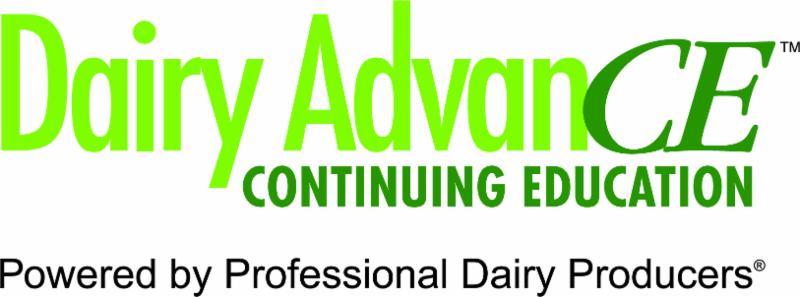 CHECK OUT DAIRY ADVANCE
- Find, track and report your Continuing Education (CEs). Get more details at
DairyAdvance.org
.
CHECK OUT DAIRY ADVANCE
- Find, track and report your Continuing Education (CEs). Get more details at
DairyAdvance.org
.
|
For your dairy...
FOCUSED EFFORTS TO MINIMIZE SHRINK CAN HELP MANAGE FEED COSTS
according to nutrition consultant David Greene. In nearly every dairy operation, feed is the number-one expense, though many producers are likely unaware of the actual cost of lost or wasted feedstuff. For example, a 1,000-cow dairy with a feed cost of $2.50 per day and 8% feed shrink is incurring an expense of $73,000 a year as a result of shrinkage.

To help dairy producers reduce feed costs, Greene outlined four main areas to watch for feed shrinkage:
- Forage area - before, during and after harvest
- The feed center
- The TMR-loading and mixing area
- The barn and feeding areas, during and after feeding
Read more in this Dairy Herd Management article to find additional recommendations. The article includes tips for conducting a walk-through audit to see where losses are happening on your farm, and creating protocols for managing feed storage and delivery.
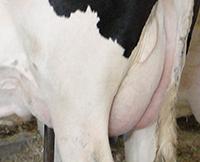 DON'T UNDERESTIMATE IMPACT OF MINOR PATHOGENS ON MILK PRODUCTION was the conclusion of a research study conducted in Finland and published in the Journal of Dairy Science. Researchers analyzed mastitic quarter samples of more than 20,000 dairy cows from 2010-2012 to understand the pathogen-specific impacts of mastitis on milk production. Though the two most commonly detected pathogens were non-aureus staphylococci and Staph. Aureus, the study found Escherichia coli clinical mastitis - when diagnosed before peak lactation - caused the largest loss, reported as 10.6% of the 305-day milk yield. Not surprisingly, milk production loss was recorded regardless of which pathogen caused the mastitis, but the study showed the extent of milk production loss was also determined by stage of lactation and whether the mastitis was clinical or subclinical. Read more here. DON'T UNDERESTIMATE IMPACT OF MINOR PATHOGENS ON MILK PRODUCTION was the conclusion of a research study conducted in Finland and published in the Journal of Dairy Science. Researchers analyzed mastitic quarter samples of more than 20,000 dairy cows from 2010-2012 to understand the pathogen-specific impacts of mastitis on milk production. Though the two most commonly detected pathogens were non-aureus staphylococci and Staph. Aureus, the study found Escherichia coli clinical mastitis - when diagnosed before peak lactation - caused the largest loss, reported as 10.6% of the 305-day milk yield. Not surprisingly, milk production loss was recorded regardless of which pathogen caused the mastitis, but the study showed the extent of milk production loss was also determined by stage of lactation and whether the mastitis was clinical or subclinical. Read more here.
 SOCIAL FACTORS AND ENVIRONMENT PLAY A ROLE IN HEALTH AND BEHAVIOR
of transition cows according to research recently published in the Journal of Dairy Science. Researchers assigned four groups of transition cows - all with five weeks remaining to calving - to either a predictable and noncompetitive social environment or an unpredictable and competitive social environment. The predictable group had access to four electronic feed bins in the beginning of the study and then six feed bins a week later. The unpredictable group was placed in a pen with other cows and had to compete with resident cows for access to feed. In addition, morning-feeding times differed day to day and cows were placed with alternate resident cows as feeding partners. SOCIAL FACTORS AND ENVIRONMENT PLAY A ROLE IN HEALTH AND BEHAVIOR
of transition cows according to research recently published in the Journal of Dairy Science. Researchers assigned four groups of transition cows - all with five weeks remaining to calving - to either a predictable and noncompetitive social environment or an unpredictable and competitive social environment. The predictable group had access to four electronic feed bins in the beginning of the study and then six feed bins a week later. The unpredictable group was placed in a pen with other cows and had to compete with resident cows for access to feed. In addition, morning-feeding times differed day to day and cows were placed with alternate resident cows as feeding partners.
Blood was sampled at the onset of the study, two weeks before calving, one week before calving and one week after calving to measure inflammatory and metabolic biomarkers. Uterine cytology was performed 3 to 5 weeks after calving to diagnose cytological endometritis. The study suggests an unpredictable and competitive social environment before calving causes changes in feeding and social behavior, some physiological indicators of metabolism and inflammation and increases the risk of uterine disease in multiparous cows after calving. Read more here.
|
CHINA ON TRACK TO BECOME NUMBER-ONE CHEESE IMPORTER
with a significant opportunity for U.S. dairy exporters, according to an article from the U.S. Dairy Export Council. China's import volume of cheese has grown more than 50-fold from less than 2,000 metric tons in 2000 to more than 108,000 tons in 2017. The country is the 7th largest cheese buyer in the world now, with expectations it will be number one within 10 years, driven by factors including:
 Increasing upper-middle-class and affluent households. Increasing upper-middle-class and affluent households.- A new generation of freer-spending, sophisticated consumers, born since 1980.
- The growing power and ease of e-commerce delivering cheese to China's doors.
- The continued spread of Western-style pizza, along with increased cheese utilization by home-grown bakery outlets.
- Foodservice chains introducing cheese to more Chinese.
Read the full blog post
here
.
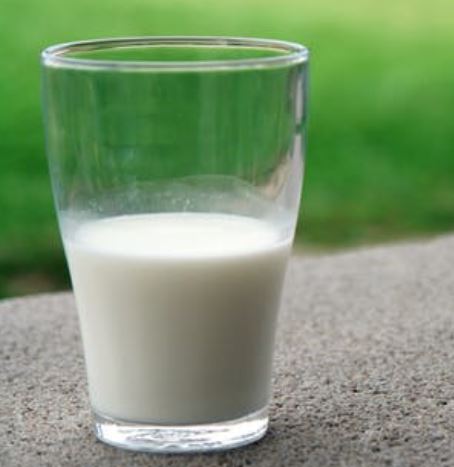 ADDING MILK TO BREAKFAST MAY HELP MANAGE TYPE 2 DIABETES
according to results of a study conducted by Canadian university researchers. They found that consuming high-protein milk at breakfast reduced blood-glucose concentration and reduced appetite after breakfast and a second meal. The research was published in the Journal of Dairy Science with authors stating the study "confirms the importance of milk at breakfast time to aid in the slower digestion of carbohydrate and to help maintain lower blood-sugar levels." Read more in a Feedstuffs article. ADDING MILK TO BREAKFAST MAY HELP MANAGE TYPE 2 DIABETES
according to results of a study conducted by Canadian university researchers. They found that consuming high-protein milk at breakfast reduced blood-glucose concentration and reduced appetite after breakfast and a second meal. The research was published in the Journal of Dairy Science with authors stating the study "confirms the importance of milk at breakfast time to aid in the slower digestion of carbohydrate and to help maintain lower blood-sugar levels." Read more in a Feedstuffs article.
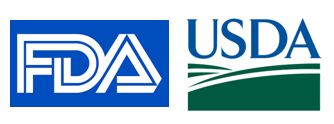 BOTH USDA AND FDA SHOULD HAVE ROLES IN REGULATING
new cell-based meat and poultry products, according to the recommendations in a letter submitted to President Trump from the North American Meat Institute and Memphis Meats. The groups stated that FDA should oversee pre-market safety evaluations, and once safety is established the USDA should regulate cell-based meat and poultry products similar to all other meat and poultry products. Read the Drovers article
here
, which includes a link to the full letter submitted to President Trump. BOTH USDA AND FDA SHOULD HAVE ROLES IN REGULATING
new cell-based meat and poultry products, according to the recommendations in a letter submitted to President Trump from the North American Meat Institute and Memphis Meats. The groups stated that FDA should oversee pre-market safety evaluations, and once safety is established the USDA should regulate cell-based meat and poultry products similar to all other meat and poultry products. Read the Drovers article
here
, which includes a link to the full letter submitted to President Trump.
|
For your business mind...
BUILDING STRONG TEAMS AND BOOSTING MORALE
is important in all businesses, but can be even more important during times of stress or challenges. Ashley Hewitt from Cornell University offers several suggestions for coaching employees and fostering a team environment on dairy farms. These low-cost solutions start with a positive attitude by managers and employees and include: 
- Be inclusive by helping everyone understand the importance of their role
- Create a roadmap with clearly stated goals
- Create a career - not merely a job - so employees have an idea of future opportunities
- Be real and establish trust
- Provide a safe environment
Read the full article
here
.
 PROFITABILITY STARTS WITH RECORD KEEPING AND UNDERSTANDING
how to use financial statements, including balance sheets and income statements to measure progress against financial goals. UW-Extension has developed a set of fact sheets for understanding the farm business model as well as key financial statements to help producers; review them
here
. PROFITABILITY STARTS WITH RECORD KEEPING AND UNDERSTANDING
how to use financial statements, including balance sheets and income statements to measure progress against financial goals. UW-Extension has developed a set of fact sheets for understanding the farm business model as well as key financial statements to help producers; review them
here
.
For a deeper look into a vast array of financial analysis, management tools and reports designed for dairy businesses, sign up for PDPW's 2018-2019 series of Financial Literacy for Dairy. More details will be provided soon on dates and locations. The waiting list sign-up is available
here
.
STAYING CALM AND FOCUSED DURING DIFFICULT CONVERSATIONS
is a critical but challenging skill for managers when working with employees, vendors or customers. In fact, allowing emotions to get the best of you during a difficult situation can set off a domino effect that may surpass the original issue. An Inc.com article outlines six steps for remaining calm during such conversations:

- Map out the desired goals for the conversation and the situation
- Focus on being collaborative instead of combative
- Listen
- Take note of concepts or phrases that trigger an emotional reaction
- When appropriate, ask for clarification
- Approach as a fact-finding dialogue, and don't commit to making emotional decisions
The author also recommends having an agenda for all meetings or calls to guide your thought process. Learn more here.
|
"No pressure, no diamonds." --- Thomas Carlyle
|
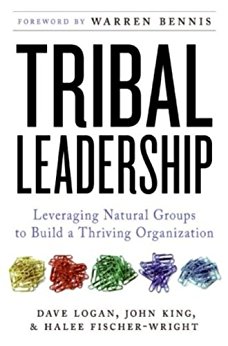 Book review... Book review...
TRIBAL LEADERSHIP: LEVERAGING NATURAL GROUPS TO BUILD A THRIVING ORGANIZATION
In all corporations and organizations, groups naturally come together in "tribes" consisting of anywhere from a few people to hundreds of people. The book's au
thors share how such tribes develop and how managers can effectively assess them and lead them to improve productivity and growth. Learn more
here
.
|
|
A BIG Thank You...
TO THE PDPW SPONSORS who are supporting your professional development organization! As a producer-led group,we extend a heart-felt "Thank You!" to those that stand alongside our nation's dairy farmers. T
heir support allows PDPW to execute best-in-class producer training and has enabled us to become the go-to resource for unified outreach initiatives. If you or a company you know is interested in participating as a sponsor, please contact us at abonomie@pdpw.org or call 800-947-7379.
See the full list of generous sponsors
here.
|
|
PDPW Education Calendar
|
September 5
|
Youngstock Management Webinar: View on your computer
|
| October 31, November 1 |
Herdsperson Workshops: Marshfield, Arlington, Wis. |
| November 13, 14, 15 |
Calf Care Connection Workshops: TBD |
| Jan. 15-17, 2019 |
2019 PDPW Managers Academy for Dairy Professionals: South Carolina
|
| Mar. 13-14, 2019 |
2019 PDPW Business Conference: Madison, Wis.
|
STAY CONNECTED
800-947-7379
|
|
|
|
|